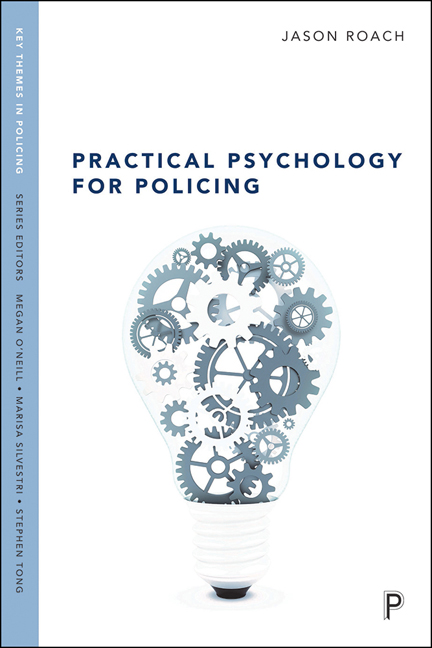Book contents
- Frontmatter
- Dedication
- Contents
- Series preface
- List of figures, tables, and boxes
- Acknowledgements
- 1 Introduction (or unleashing the kraken)
- 2 Psychology and policing: welcome bedfellows?
- 3 Human and police decision-making
- 4 Challenging common police perceptions of career criminals and serious offenders
- 5 Self-Selection Policing
- 6 Psychology, expertise, and improving police officer street-craft
- 7 Psychology and crime prevention
- 8 Psychology and police wellbeing
- 9 Psychology and policing: taking stock and where do we go from here?
- Notes
- References
- Index
7 - Psychology and crime prevention
Published online by Cambridge University Press: 17 January 2024
- Frontmatter
- Dedication
- Contents
- Series preface
- List of figures, tables, and boxes
- Acknowledgements
- 1 Introduction (or unleashing the kraken)
- 2 Psychology and policing: welcome bedfellows?
- 3 Human and police decision-making
- 4 Challenging common police perceptions of career criminals and serious offenders
- 5 Self-Selection Policing
- 6 Psychology, expertise, and improving police officer street-craft
- 7 Psychology and crime prevention
- 8 Psychology and police wellbeing
- 9 Psychology and policing: taking stock and where do we go from here?
- Notes
- References
- Index
Summary
Introduction
With this chapter we explore how psychological knowledge and research can be used to inform policing, by helping to reduce the chances of a crime happening in the first place. Unlike criminology, crime prevention is of course not concerned primarily with targeting those who would commit crime, but with working to reduce the number of potential victims of crime by encouraging people to be more security conscious where they are currently not (for example, by routinely locking doors and windows in their home when they are absent) and by identifying places that appear to act as ‘attractors’ of criminal behaviour and modifying them (for example, dark alleyways and badly run pubs).
We concentrate our focus therefore on how psychology can inform policing in what Brantingham and Faust (1976) refer to as ‘primary crime prevention’ (1976) and not on what they refer to as ‘tertiary crime prevention’ which is preventing known individuals from re-offending; for example, police targeting of organised crime groups (OCGs) or those being released from prisons.
The psychology of preventing crime
The three levels of crime prevention
Brantingham and Faust (1976) identify three levels of crime prevention: primary level, whereby prevention is directed at modification of criminogenic conditions in the physical and social environment; secondary, by focusing on those deemed at risk of becoming offenders; and tertiary, the targeting of ‘known criminals’ to prevent them from committing crime (Brantingham and Faust, 1976). As discussed in a previous chapter, Situational Crime Prevention (SCP) is firmly rooted at the ‘primary’ prevention level as it is concerned with reducing crime by employing modifying environments in ways that deter anybody from crime and not just those who are already active offenders. It is to SCP that we now turn our attention, particularly the psychology behind this approach to preventing crime.
Situational Crime Prevention
SCP (Clarke, 1983) is principally concerned with developing and promoting practical measures to prevent a crime, by focusing on reducing the specific opportunities for it. This is primarily achieved through manipulations of immediate environments in which a crime occurs (Hodgkinson and Farrell, 2017). For example, the fitting of alarms and immobilisers as standard on new cars by their manufacturers saw an immediate and significant reduction in the number of new cars stolen in the UK essentially because the act of stealing a new car became harder (Farrell and Brown, 2016).
- Type
- Chapter
- Information
- Practical Psychology for Policing , pp. 78 - 92Publisher: Bristol University PressPrint publication year: 2023

